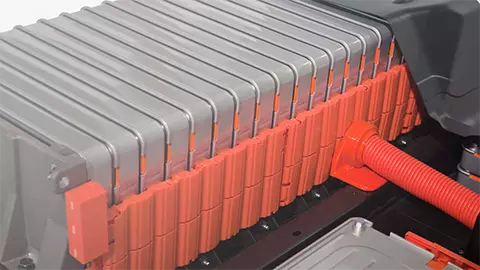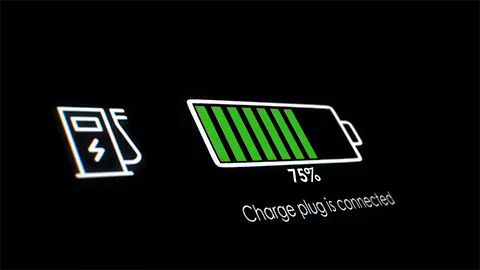5 Types of EV Batteries
Hybrid, plug-in hybrid, and all-electric vehicles all use battery packs. The type of battery used varies depending on the type of vehicle you are driving. As of this writing, current battery packs are designed to outlast the vehicle they are installed in and battery warranties are generally 8 years or 100,000 miles. When used in moderate climates, many of today’s EV batteries can last up to 15 years.
The different types of batteries being used today are lithium-ion, nickel-metal hydride, lead-acid, and ultracapacitors. New technology such as solid-state batteries are just a few years away from being used in EVs and will change the way people think about electric cars. For one thing, they have a range of over 500 miles on a single charge.
Lithium-Ion Batteries
Most of today’s EVs use lithium-ion battery packs. It is the same technology used in smartphones and laptop computers and are known for having a high power-to-weight ratio. Very efficient and offering excellent high-temperature performance, they are currently the best option for holding a stable charge and are recyclable. However, lithium-ion batteries have come under a lot of scrutiny for the not so eco-friendly way the materials for them are mined. For instance, it takes 500,000 gallons of water to refine one ton of lithium.
Nickel-Metal Hydride Batteries
You’ll mostly find these battery packs in hybrid vehicles that combine a gasoline engine with electric motors. These cars use gasoline power to recharge the onboard battery. Nickel-metal hydride batteries generally last longer than lithium-ion batteries and are safe to use. The drawbacks are that they are expensive to produce, generate a lot of heat at high temperatures, and have a high discharge rate.
Lead-Acid Batteries
These are the kind of 12-volt batteries used in gasoline-powered cars to start the motor. They have been around a long time and are inexpensive and safe to use. However, lead-acid batteries have a relatively short life, and don’t do well in cold weather. This sort of battery is only used in EVs to power supplemental auxiliary features; providing backup power to power steering, brake boosting, and to power the safety features in EVs.
Ultracapacitors
Like lead-acid batteries, ultracapacitors are used as secondary storage devices and help to level the load of lithium-ion battery packs. They basically store polarized liquid between an electrode and an electrolyte. Ultracapacitors also give EVs an extra boost of power during acceleration.
Solid-State Batteries
In the next few years, solid-state batteries may well be the battery of choice for EVs. They can reduce the carbon footprint of EV batteries by nearly 40 percent. Solid-state technology uses solid ceramic material instead of liquid electrolytes to carry the electric current, making the batteries cheaper, lighter, and faster to charge. BMW and Ford are testing the batteries now for use in 2025 vehicles. Solid-state batteries are also capable of having a driving range of 500 miles, eliminating “range anxiety.”

















